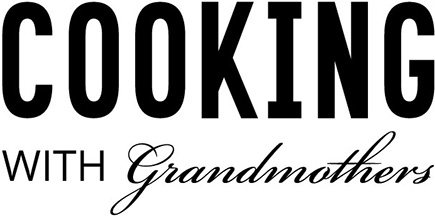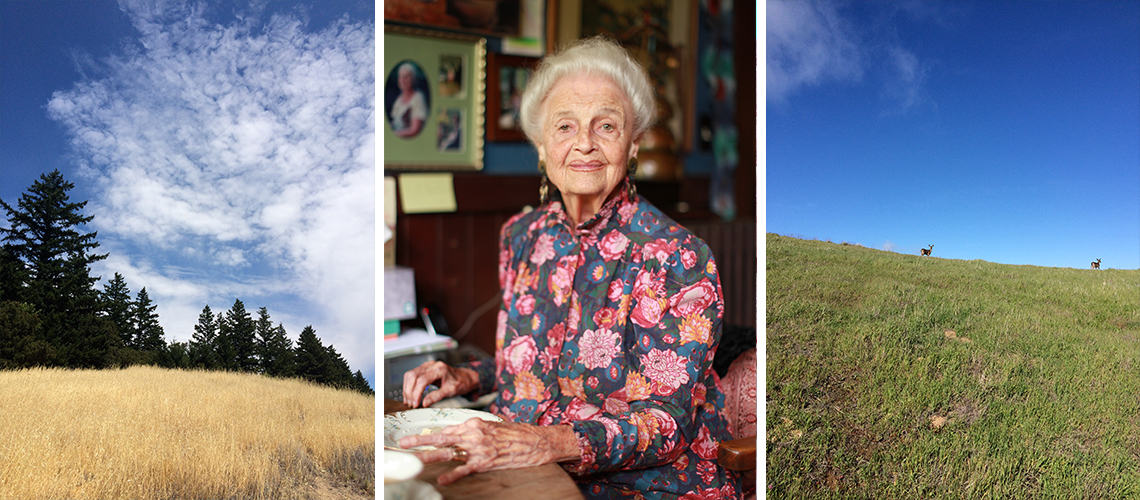Tea at Betty Peck’s house is at four thirty, and it is every day. Green tea, the simple bagged kind, is Betty’s favorite and there is always a big, very well brewed pot of it at teatime. Betty provides the tea and inspiration, and I almost always bring the sweets: frosted cupcakes, peanut butter cookies, and chocolate chip ones with ice cream to make sandwiches on the Fourth of July. She likes really, really sweet stuff, and even makes her Christmas ornaments from leftover Haagen-Daz ice cream sticks, spray-painted gold and formed into stars. They are surprisingly elegant; Betty is elegance personified, and everything she touches follows suit.
A big California oak tree shades most of her property in Saratoga, CA, and when you walk up the driveway you enter an enchanted land. It is a relatively small property, littered with crispy leaves the oak has dropped everywhere, and sprinkled throughout with things to delight: mourning doves coo in one corner, a childrens' narrow gauge train runs on its tracks, a regal peacock stands proud in The Great Hall, a small outdoor amphitheater sits ready for a variety of the annual performances, such as May Day when a hundred people dance around the pastel-ribboned pole then eat strawberry shortcake together at 8am.
Betty is a pioneer of holistic early childhood education, specializing in Kindergarten. She taught thousands of kindergarteners during her career, giving children all over northern California a magical and grounded start to their educational life. I met Betty through my dear friend Alec, one of her daughter Anna’s former Kindergarten students, who invited me to one of Betty’s teatimes. Alec had raved about the Kindergarten Bread he learned to make when he was four, and still makes to this day. I first went to Betty’s to learn about this renowned bread, but what unfolded during our dozens of lengthy conversations was Betty’s philosophy on learning and life.
In Betty’s Kindergarten, everything came back to one of three things: the garden, the body, or the cosmos. Food-- the result of the garden and sustaining of the body-- was therefore a regular topic, and cooking a frequent activity. Earth Eggs (small, warm new potatoes, wrapped in foil, with a nob of butter tucked inside) were hidden on Easter for the children to find, Kindergarten Bread was made weekly, and Angel Food Cake with Betty’s Quick Lemon Curd was served whenever there was a birthday to celebrate.
Things developed organically in Betty’s Kindergarten out of the wisdom and creativity she found inherent in young children. For me, the Angel Food Cake was the most touching of these stories: One year, one of Betty’s sweetest kindergarteners became very ill and was hospitalized. Each day the other Kindergarten children would gather together and draw a card to send her. One day, the little girl passed away. When Betty told the other children of the news she asked them “My dears, what should we do to celebrate the life of this little angel who has been in our midst.” They became very quiet and then responded, “Why, we should have an Angel Food Cake and remember all the wonderful things about her.” So that is what they did—they ate an Angel Food Cake, Betty creating the world’s easiest lemon curd to go along with it. From that day on, whenever there is a birthday to be celebrated in Betty’s classroom or home, it is done through cake and curd.
Special stories like this abound from Betty’s teaching; however, the mainstay of Betty’s classroom cooking was the Kindergarten Bread. Baked weekly, the making of the bread takes children through all the stages of wheat, from kernel to loaf. The children plant the wheat each year, harvest it, grind a small amount to add to the bread, and learn about kneading, rising, and baking, singing songs about the different stages along the way. Each student even practices the letter of the week by forming it with dough (the tactile, three-dimensionality of which has been found to help students with reading and writing skills.) Every little thing in Betty’s classroom had its purpose- to show how everything in life is connected. The bread was a delicious, regular example of this.





SHARE YOUR THOUGHTS